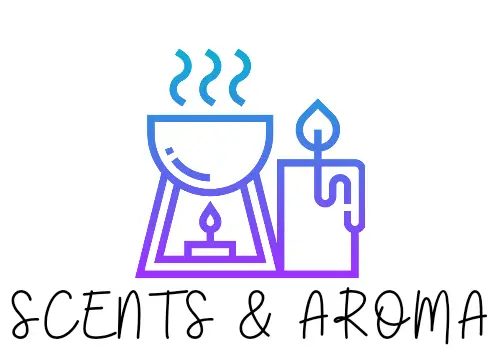In the summer months or in well-heated spaces, you might be worried about candles melting. Of course, candles are designed to melt when they’re lit, but we want to avoid them melting at other times.
In this article, we’ll look at the different types of waxes, their respective melting points, and where they might melt. We’ll also throw in some tips on how to prevent your candles from melting.

So, for those who don’t have time to read the full article, where will candles melt? Candles will melt anywhere where heat gets concentrated – so in a car, outside in direct sunlight or on a hot day, inside where there is no air conditioning or when they’re placed by a heat source.
Different types of wax and their melting points
Before we can look at where candles might melt, it’s important to discuss the different types of waxes and whether or not the type affects its likelihood of melting. The melting point of a wax is defined by the temperature at which the solid wax becomes liquid.
Paraffin wax
Paraffin wax is arguably the most common type of wax in candles. This is due to its availability as a by-product of petroleum production, which makes it low cost. Paraffin wax candles typically have a melting point between 115 °F and 154 °F (46 °C and 68 °C).
Soy wax
Soy wax is another type of wax used for candles. Due to people becoming more conscious of the environment, many are choosing to buy soy wax candles. Others choose soy wax because they don’t have the harmful toxins that paraffin candles contain. As for the melting point of soy wax, this is higher than paraffin wax. Soy wax melting points range from 120 °F to 180 °F (49 °C to 82 °C).
Beeswax
Beeswax has been used for millennia. There has even been beeswax found in ancient tombs in Egypt! As candle waxes go, beeswax is great because it’s a pure, natural product that has a nice honey-like scent naturally. The melting point of beeswax is higher than paraffin wax and soy wax and ranges between 144 °F and 147 °F (62 °C to 64 °C).
Coconut wax
A rare type of wax, but one that’s increasing in popularity, is coconut wax. Coconut wax has a very low melting point. This ranges between 100 °F and 107 °F (38 °C and 42 °C). If you’ve ever used coconut oil, you’ll know about its low melting point as this often appears as a liquid in warm homes in the summer months.
Places candles might melt
Now we know a little bit about different types of candle wax and their melting points, we can examine where candles might melt.
Will a candle melt in a car?
I’m sure not many people keel their candles in their cars however you might leave one in there accidentally.
So will a candle melt if left in a car?
When outside temperatures reach 80-100 °F (25-38 °C), a car’s internal temperature can climb to between 130 °F and 172 °F (54 °C to 78 °C). In these situations, all four types of waxes will melt in a car. It’s vital, therefore, to keep candles out of your car during warm and hot days!
Can A candle melt in direct sunlight ?
Whenever you watch the weather forecast and see the daily temperatures, you might be inclined to think that this is the temperature in the sun.
However, daily temperatures are told as the temperature in the shade. When you’re in the shade, you feel around 10 to 15 degrees cooler than in direct sunlight. This is because you’re not being ‘heated’ by the sun. So, even if the temperature outdoors is below the melting point of your candle, be wary that solar radiation will heat up the wax causing it to melt.
Also, if your candle is in a candle jar or glass this can really amplify and concentrate the heat of the Sun. In this case a candle can certainly melt outside if in direct sunlight.
Outside
If you have candles outside in the shade, they might still melt if the temperature is high enough. It’s quite common for waxes with lower melting points like coconut and paraffin to melt in the summer months, even when they’re in the shade.
Inside the home
If it’s summer and you don’t have air conditioning, there’s a good chance some of your candles might melt in the heat. This is especially true if during the day they are exposed to any direct sunlight coming in from the window.
It’s not only summer when you need to consider candles melting. In winter, if you have a candle located near a heat source, this could heat it up enough to cause it to melt. A heat source might be a fireplace, radiator, oven, or even a lamp.
How to make sure your candles don’t melt
If you live in a warm place, you should consider buying candles that use a wax with a higher melting point like beeswax or soy wax. You should avoid coconut wax completely, unless it is a blended wax with other substances to increase its melting point.
After choosing an appropriate wax, you need to think carefully about where you place your candles. Avoid heat sources like heaters, radiators, fireplaces, lamps, and spaces with direct sunlight.
If you’re going out to buy candles on a hot day, make sure that you don’t leave them in the car to melt!
Candle tunnelling
It’s not only the external temperature that can cause problems with your candle wax. The phenomenon of candle tunnelling is when a lit candle melts through the candle’s centre, heading downwards without burning all of the wax on the edges.
Candle tunnelling is most often caused by how long the candle is left to burn the first time it is lit.
To prevent candle tunnelling, you need to make sure you burn the candle long enough for the whole of the candle top to become liquid. If a candle is not burnt for long enough for this to happen, then all of the exterior wax won’t melt and will be wasted as the candle burns. There are ways to fix the problem but, as in all situations, prevention is better than the cure!
Another cause of candle tunnelling is when your candle has a sinkhole which is like a crater near the wick
Final thoughts – places where a candle will and will not melt
As we’ve seen, different candle waxes have different melting points, so that’s the first thing to consider when you’re looking at whether a candle will melt or not. Next, you need to consider its storage location.
Don’t leave a candle in a hot place like inside a car, near a sunlit window or any heat source. Also, be wary of where you store your outdoor candles so that they’re not going to melt in the sun. Finally, look into candle tunnelling so that you make the most out of your candle and avoid wasting wax.
- Can You Put Perfume In A Humidifier? (Read First) - September 17, 2022
- Can You Put Essential Oil In A Steam Mop? (Safety Advice) - September 17, 2022
- How To Make Lavender Oil At Home ( Candles And Diffusers) - September 9, 2022
